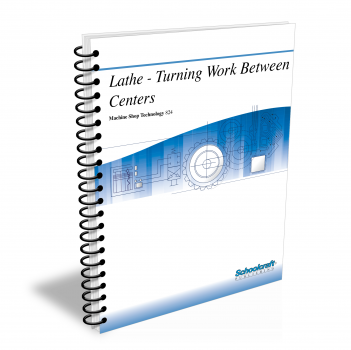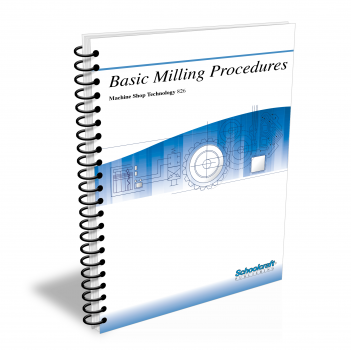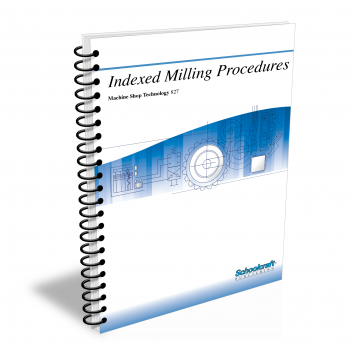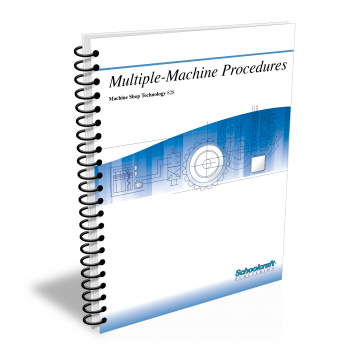Machine Shop Job Analysis
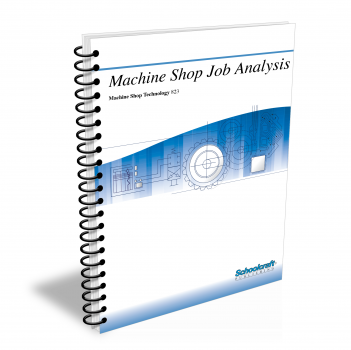
Course Number: 823
The Machine Shop Job Analysis textbook covers types of jobs likely to be encountered by the maintenance machinist, and describes how the machinist decides which machine(s) to use for particular operations. It shows how to analyze the entire job before selecting the most efficient sequence of machining operations. This textbook builds on Courses 315, 316, 317, and is a prerequisite for the ""hands-on"" projects in the courses that follow.
Does your curriculum require additional topics not included in this textbook? Build a customized version of the Machine Shop Job Analysis textbook below.
Recommended Contact Hours – 8
Preview a Chapter
Available Supporting Material
- Table of Contents
- Exam Copies
- Suggested Titles
Table of Contents
Chapter 1: Machining Cylindrical Shapes
Topics: Turning; Shoulder facing; Machining fillets; Turning profiles; Knurling; Filing; Facing; Boring; Counterboring; Thread cutting
Learning Objectives:
- Explain the procedures for turning single and multiple diameters, including shoulders, fillets, and relief notches.
- Compute tapers, including the use of the setover method, compound rest method, and taper attachment method.
- Show how to use the cutting tools and machines for knurling, filing, and polishing.
- List the procedures for facing chucked work and work mounted between centers on the lathe.
- Describe the procedures for boring and counterboring in a lathe and boring mill.
Chapter 2: Drilling, Reaming, and Honing
Topics: Workpiece stationary, drill rotating; Workpiece rotating, drill stationary; Drill press jobs; Radial drill presses; Spot facing tools; Boring bars; Drill bushings and jigs; Reaming; Honing
Learning Objectives:
- Describe the basic drilling process.
- List drilling procedures for work mounted in a lathe.
- List drilling procedures for work mounted in a drill press.
- Explain the use of reaming in a lathe and a drill press.
- Explain the use of honing and the type of equipment used.
Chapter 3: Machining Flat Surfaces
Topics: Plain, side, straddle, profile, and face milling; Irregular shapes; Slotting; Shaping; Broaching; Surface grinding
Learning Objectives:
- Describe the basic milling process, cutter types, and their application.
- List slotting procedures in a milling machine.
- and milling.
- Define broaching, its application, and the machines used.
- Define surface grinding, its application, and the machines used.
Chapter 4: Determining Tolerances and Finishes
Topics: Linear dimensions; Tolerances; Limits; Tolerance stackup; Rough cuts; Allowances for finishing; Finish cuts; Surface texture and finish
Learning Objectives:
- Define dimensional factors, including linear and angular dimensions.
- Compute tolerances and tolerance stackup.
- Describe allowance for finishing, including procedures for finish cuts.
- Compute surface texture in terms of an average used for final machining.
- Analyze surface finish requirements as specified for the job.
Chapter 5: Variables Affecting Job Efficiency
Topics: Machinability; Chip formation; Selection and application of cutting fluids; Solid lubricants; Machining efficiency; Selecting tooling/fixtures
Learning Objectives:
- Define machinability of workpiece stock, including machining variables, and workpiece variables.
- Explain machinability ratings.
- Select cutting fluids, cutting lubricants, and solid lubricants.
- Describe machining efficiency, including minimal workpiece setups and standard versus special tooling and fixtures.
- Identify the correct machine and cutting tool for a given job.
Request Exam Copies
Exam Copies
Ready to see a copy of our textbooks? After selecting which textbooks you’d like to review for your course, you can submit your request by either logging in or creating an account so we know where to ship your exam copies. A representative from Schoolcraft will contact you to confirm and finish processing your request.
Exam copies are always free and yours to keep.
Selected Exam Copies
none selected
* Maximum of five copies can be ordered
